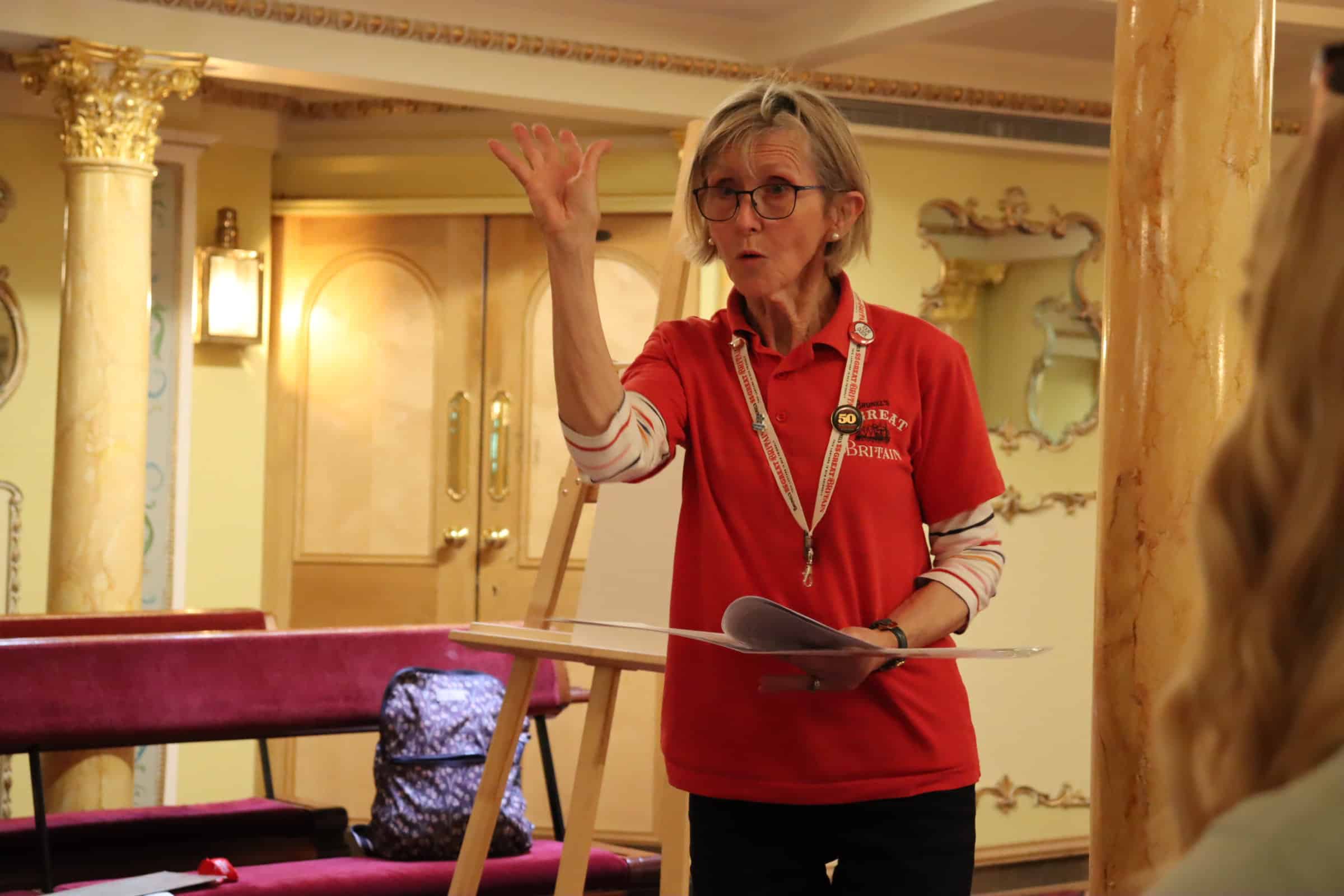Given her size and revolutionary design, the SS Great Britain was well suited to cater for the new prospectors desperate to reach the ‘diggings’ as quickly as possible. On her first voyage to Melbourne in 1852, the SS Great Britain carried 630 passengers. Whilst a significant number of them intended to prospect for gold, many more were skilled artisans and tradesmen intent on establishing businesses to meet the miners’ needs.
Our army of volunteers have been researching this moment in history, which has become the basis of a talk that visitors can experience as part of their visit. We asked two of our volunteers a couple of questions about the Gold Talks to understand a bit more about what you can expect;
How did you come up with the idea for the Gold Talks?
“A comprehensive study of the SS Great Britain’s history is not possible without using the word gold! From the 24cwt gold which decorated various parts of the ship when she launched in 1843, to her epic voyages to the Australian gold fields, the word weaves its way through the ships illustrious history. Peter Revelles (volunteer) extensive research revealed stories of courage, tenacity, fortunes won and lost, even murder! The perfect ingredients for these talks.” Eddie Elston
What can visitors expect during the Gold Talks?
“Nine volunteers are taking part, each delivering their own, unique presentation. Some concentrate on the voyage itself, some on individuals or groups who sailed on the ship in 1852, whilst others describe life at the diggings, complete with its hardships and dangers. Our visitors will get a feel of what life was like for the 630 passengers on that first Australian voyage.” David Slade
Can you tell us your favourite story of passengers going in search of gold?
“William Paulton Green, a railway clerk for the Northern Railway and tired of his hum-drum life as he sees it. The news of the gold discovery in Australia excites him and after selling all he has, books passage on the magnificent steamer, the SS Great Britain, to the gold fields.
On arrival, he eventually teams with three other prospectors and after many labours discovers ‘the leg of mutton’ – the largest gold nugget known to the world – so named because of its likeness to that item! The gold is eventually sold to the Bank of England thus making Green and his partners very wealthy indeed. With his new-found wealth, Green moves to Canada and invests his money in various projects. One such was a large hotel that was eventually destroyed in a fire. No insurance had been taken to cover this event and Green suffered a big loss!
William Paulton Green is my favourite passenger story because he displays the very best and the frailties of human nature.” Eddie Elston
“The subject of my own talk is Stephen Curnow, a 29-year-old Cornish agricultural worker. He was a steerage or third-class passenger in 1852 and spent about four years on the diggings before returning to Cornwall; now a relatively wealthy young man.
My presentation centres on Stephen and particularly on the letters that he wrote home to his parents. The letters show him to possess clear and precise observational skills, coupled with sound common sense, a willingness to work, generosity of spirit, and a pragmatic optimism. He writes of the hardships that he faced in Cornwall and his determination to stay at the diggings long enough to earn money to return home and be able to enjoy an improved standard of life.
He sums up the outward voyage brilliantly. Just three words suffice: “fighting, grumbling and praying”. I think that I would have liked Stephen!” David Slade




